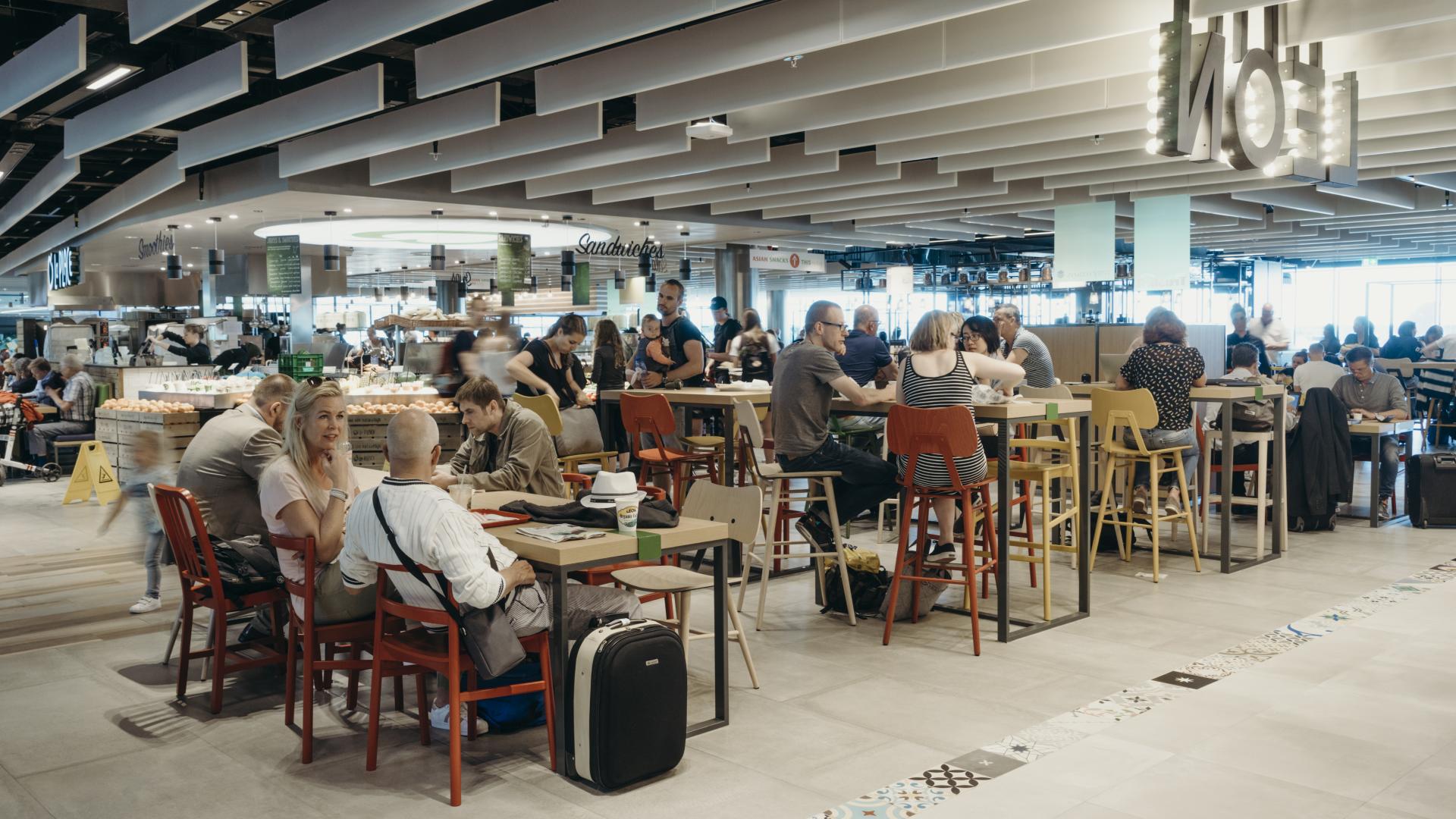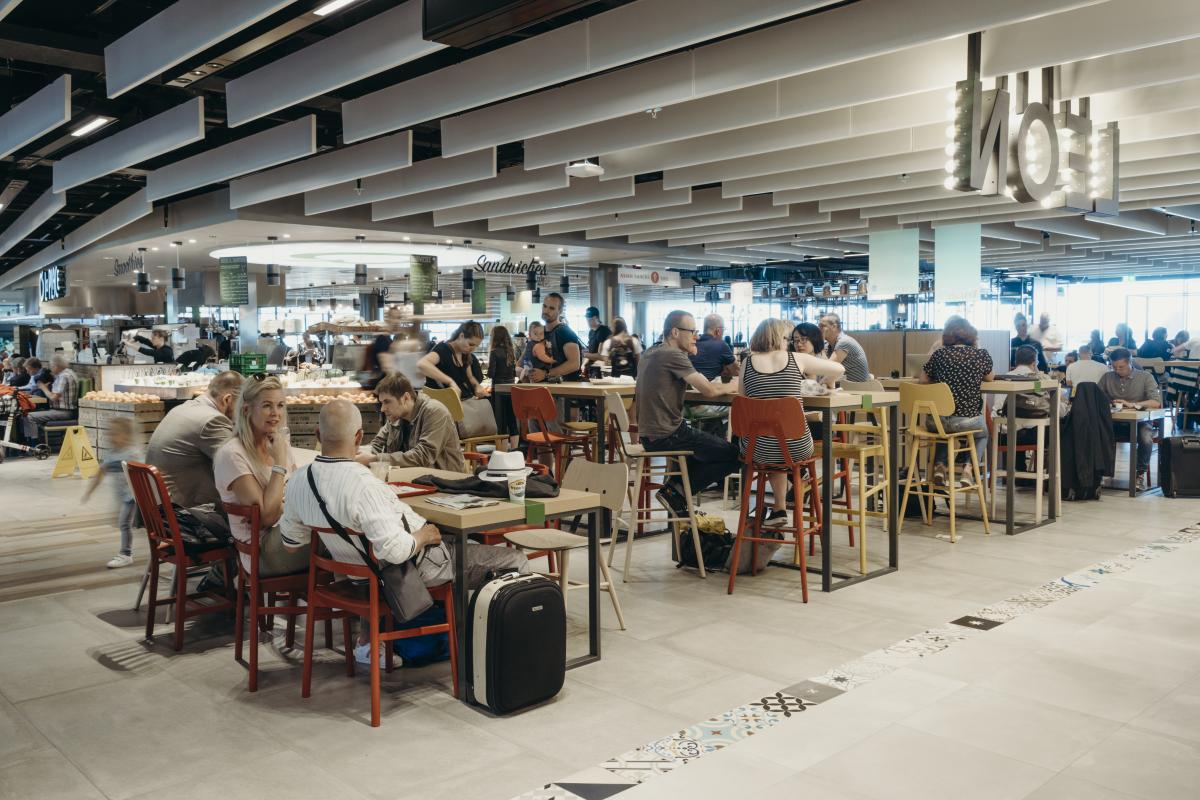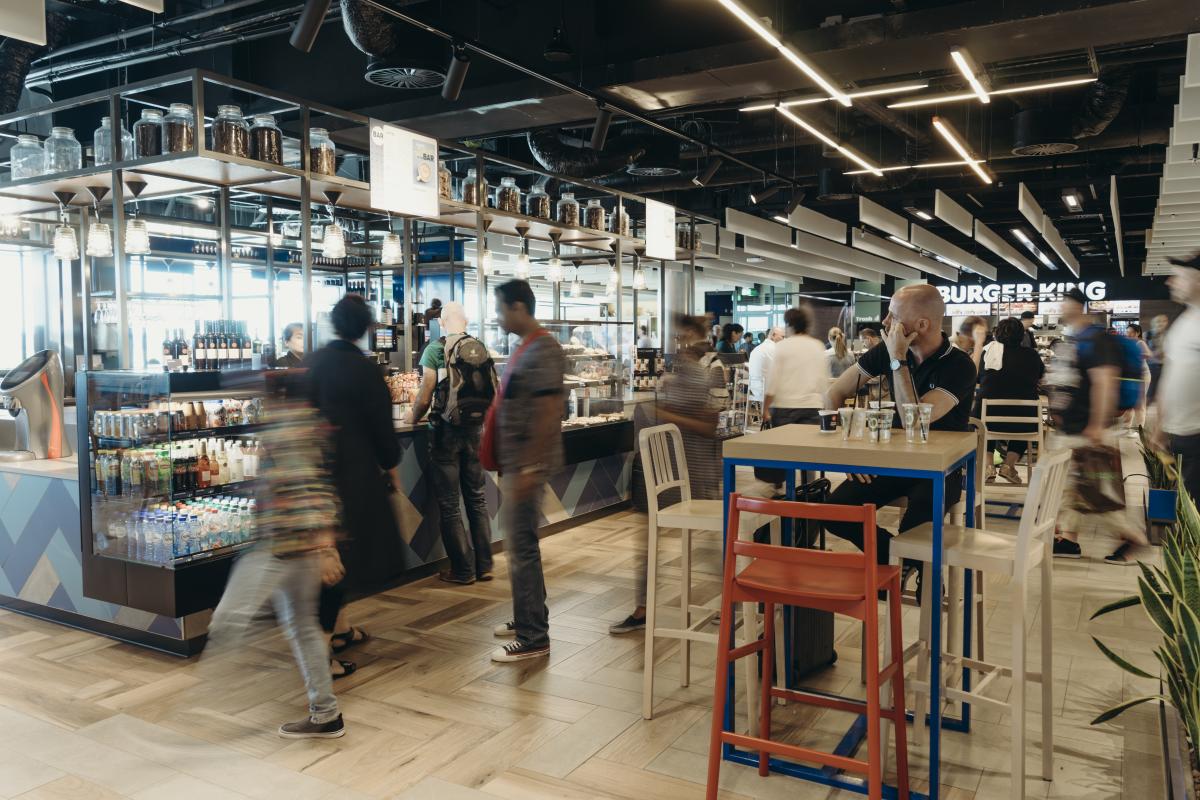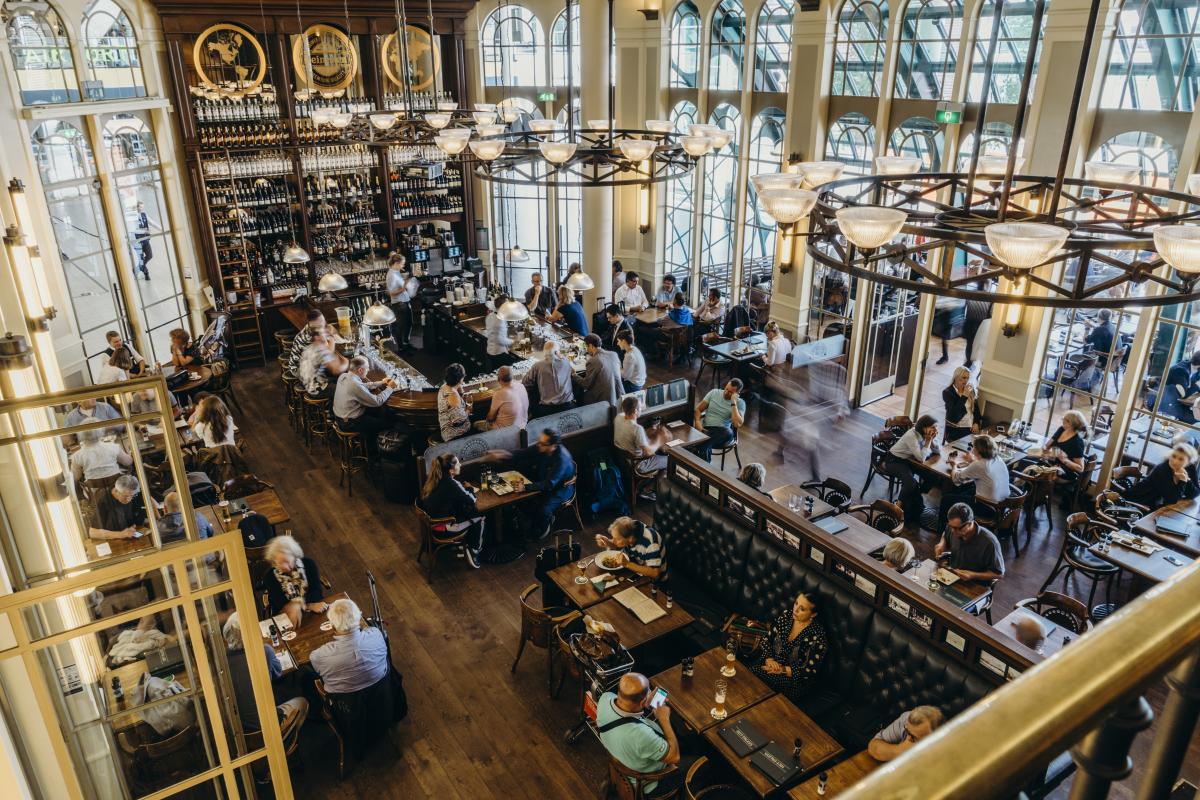Creating a sense of place together
Amsterdam Airport Schiphol is the gateway connecting the Netherlands to the rest of the world. And vice versa. Travellers choose Schiphol due to its unique network of over 350 direct connections. “But also because of the atmosphere, the travel experience and the wide range of F&B on offer,” emphasises Mieke Verduijn, Developer F&B at Royal Schiphol Group. “As many as 80% of our passengers engage with F&B. So, the impression of our food & beverage outlets is one of the most important determinants in terms of passenger satisfaction. We collaborate intensively with our strategic partner HMSHost International to ensure hospitality establishments aim for exceeding passenger expectations.”
From idea to implementation
“By intensively investigating the customer journey, we develop the right commercial services within the airport,” explains Mieke Verduijn. “Will this be a shopping area, a waiting room, leisure or F&B? The starting point for deciding what to do with new airport real estate is its physical context. Is the location situated before or after security? Is it on a pier or in a lounge? And when passengers pass by here, at what stage of their customer journey are they? What do they need?” Whenever that need turns out to be a hospitality establishment, Amsterdam Airport Schiphol engages its strategic partner HMSHost International. “This collaboration goes beyond just sparring and brainstorming together. We set up the entire process together, from the initial idea all the way to the implementation and assessment. HMSHost is an expert in concept development, they advise us in everything from product range and staff to signage and customer experience.”
Sense of place
Despite Schiphol’s international position, it’s important that passengers experience the Dutch culture and mentality. “It’s what we call the ‘sense of place’. Many of our passengers do wish to feel that they are in The Netherlands when arriving at Schiphol. When Dutch people return from their travels, they want to feel glad to be at Schiphol, to feel like they’ve come home.” Surveys have shown that it’s not just local passengers who enjoy Schiphol’s familiarity. “International passengers also indicate that they appreciate seeing something of the country they are in. They want to see it and experience it. Even if Schiphol is just a stopover on a journey from the US to Asia, they want to feel they’re in Amsterdam rather than London or Paris.”
Creating memories
“Some passengers love getting to Schiphol three hours before their flight. They take their time to, say, have a quiet cup of coffee, eat lunch or celebrate the start of their holiday with a drink. They create their first travel memories in the Netherlands in our concepts. That’s why, together with HMSHost International, we also try to create a unique sense of place in the hospitality outlets.”
A great example of this characteristically-Dutch atmosphere is the Dutch Bar & Kitchen, which Schiphol opened in 2010 together with HMSHost International on Holland Boulevard. “At this restaurant, located between international lounges 2 and 3, passengers can have a drink while sitting in huge Delft blue teacups and enjoy poffertjes (Dutch pancakes), stroopwafels (syrup waffles) and other Dutch culinary specialities.” Of course, creating a sense of place involves more than just magnifying traditional Dutch icons like clogs and tulips. “Because obviously the Netherlands is much more than that,” Mieke emphasises. “We also create that feeling by including familiar F&B items in the product range, employing Dutch staff and by partnering with local producers and suppliers like Dutch potato farmer Henk Scheele.”
Stress levels
“Through their extensive international portfolio of F&B concepts, HMSHost International excites us with what’s going on in the rest of the world. They are experts in the field of hospitality at international, high-traffic locations. And that’s extremely valuable for us, because the trends we see on the high street are not always literally transferrable to a location like Schiphol,” explains Mieke. “For instance, time is a much more important factor at an airport than on the street. All passengers experience a certain level of stress. You regularly glance at the clock and the screens to check what time your flight is leaving, from which gate and how far you have to walk from where you are. Some people are more extreme than others in this respect, but everyone experiences stress to some extent.” In response to the need for speed and convenience, HMSHost designs most concepts with a need for fast service in mind. “So in many of our outlets you pick your options and pay first before you take a seat. When the information screens say ‘boarding’, passengers generally want to get up and go to the gate right away.”
Driving force for change
“To keep up with the times we keep a close eye on trends in major Dutch cities like Amsterdam, Rotterdam and Utrecht. However our main focus in this regard is Generation Z [generation born after 2000, ed.]. This is clearly not our largest user group or the generation with the most disposable income, but they are a driving force for change. It’s the generation that pushes the boundaries and demands innovation. They are the early adopters who are inevitably then followed by other generations.” According to Mieke, this generation is especially concerned about food ethics. “Generation Z refuses to be hoodwinked. They read labels and they want to know a product’s backstory. They also focus on themes like circularity and (more) planted-based diets, so we do likewise.”
Going out on a limb
One trend that Mieke says is more successful in an urban context than at an airport, is pre-ordering. “More and more people are ordering and paying for their meals in advance, having them delivered or picking them up at a time and place that suits them. In 2018, together with HMSHost International, we tried out this kind of pre-ordering in the guise of gate delivery through Deliveroo. However, it’s clear that passengers are more focused on the initial stressful events like passing through security and passport checks. They only start thinking about what they want to eat and drink afterwards. So, we are going to adapt and implement this trend in a different way.” Despite the fact that the pilot didn’t meet expectations, Mieke is proud of the results. “It’s really cool that we went out on a limb with our business partner HMSHost International to try this out. We’re not afraid to take a leap into the unknown. We learn from everything we do!”
Launching pad for brands
In the future, Schiphol aims to serve as a launching pad for global brands. “What we mean by that is, here at Schiphol we want to be the first to welcome international brands that want to establish themselves in the Netherlands. Like, for example, the Starbucks coffee chain which opened its first Dutch outlet at Schiphol in 2007 in collaboration with HMSHost International. After which many more followed throughout the country.”
Vice versa, too, Mieke wants to attract Dutch hospitality concepts that are looking to expand abroad. “Schiphol is an ideal testing venue for serving an international target group. In this respect HMSHost International is also an important partner. Not every brand is sufficiently professionalised to be able to operate in a complex and dynamic environment like an airport. By partnering with HMSHost International and their expertise, this suddenly becomes an option. And considering that powerful, relatable brands are becoming increasingly important for the younger generation, I only expect our partnership to continue developing.”
Are you wondering what HMSHost International can do to expand your high-traffic location? Feel free to contact one of our experts and arrange a meeting without any obligations.




